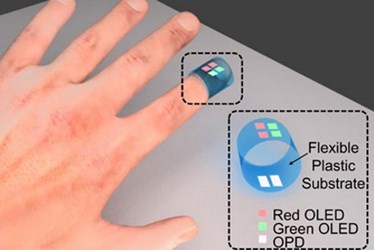UC Berkeley Engineers Develop Organic, Wearable Medical Sensor
By Chuck Seegert, Ph.D.

Existing pulse oximeters are expensive and limited to certain anatomical locations like fingertips and ear lobes. New technology from researchers at the University of California Berkeley (UC Berkeley) may eliminate these limitations, however, based on a low-cost, organic design that can be applied much like a Band-Aid.
Wearable technology is on the rise, and some analyses claim that the market will achieve tens of billions of dollars in growth over the next decade. The prevalence of the technology has been high in the fitness space, but several obvious benefits have been recognized for the medical device and healthcare environments as well.
A new addition to wearable technology is a pulse oximetry (pulse-ox) device developed at UC Berkeley, according to a recent press release. The new sensor is manufactured from organic materials that perform optoelectronic functions similar to traditional silicon-based pulse-ox sensors.
The carbon-based pulse-ox device can be manufactured using thin, flexible plastic substrates that have the sensor’s active layers deposited on them, according to a study published by the team in Nature Communications. Solution-processing is used to spin-coat and, in some cases, print these layers to attain the functionality of a pulse-ox sensor. A completely organic optoelectronic sensor reads the signals delivered from green (532 nm) and red (626 nm) organic light-emitting diodes (OLEDs).
The wavelengths used in the organic device were somewhat different than those traditionally used in pulse-ox technology, but when compared to a commercially available pulse-ox unit, its accuracy was comparable, according to the press release. Pulse oximeters work by delivering light to a tissue and analyzing the light transmitted through the tissue layers. Oxygen-rich blood absorbs greater amounts of infrared light, while darker, less oxygenated blood absorbs more red light. The ratio of the two wavelengths indicates how much oxygen is in the blood.
“We showed that if you take measurements with different wavelengths, it works, and if you use unconventional semiconductors, it works,” said Ana Arias, an associate professor of electrical engineering and computer sciences and head of the UC Berkeley team, in the press release. “Because organic electronics are flexible, they can easily conform to the body.”
As diagnostic capabilities become more manufacturable and affordable, they are being applied in unique settings to solve problems in new ways. Recently, a home lab system was developed that uses wearable technology to provide real-time monitoring for cardiac patients in their homes.
Image Credit: Yasser Khan
